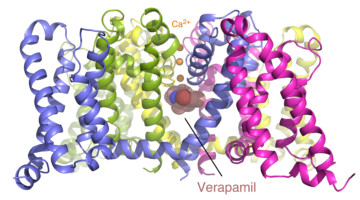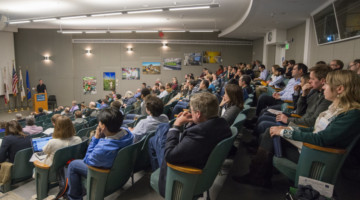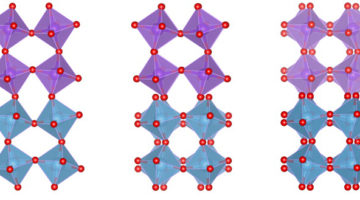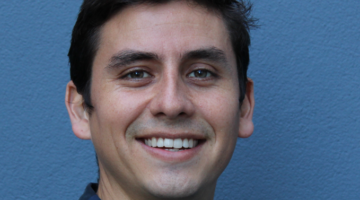I want to thank everyone in the ALS family for an extremely productive and exciting 2016, and convey my expectations for our continuing successes in 2017. We have much to be proud of as we continue to build our capabilities and collaborations, increase the impact of our scientific outputs, and expand our ability to enable important science for users in so many areas of research and development. Read more »
ALSNews Vol. 379
JANUARY 25, 2017
Altered States in Graphene Heterostructures
ARPES directly reveals for the first time how electronic states are altered when epitaxial graphene is deposited on a substrate of hexagonal boron nitride (h-BN). The interaction between the materials in this heterostructure greatly improves its suitability for advanced, ultralow-power device applications. Read more »![]()
![]()
Two Basic Mechanisms of Cardiovascular Drugs
The structures of proteins controlling calcium-ion transport through cell membranes have been revealed, bound to two drugs known as calcium channel blockers. The discovery might accelerate the development of safer and more effective drugs for treating cardiovascular disorders such as high blood pressure, chest pain, and irregular heartbeat. Read more »![]()
![]()
Workshop Focuses on the Unique Science Enabled by ALS-U
Visiting scientists met Jan. 18-20 at Berkeley Lab for a workshop that collected input on the range of new science that will be enabled by the planned upgrade of the Lab’s Advanced Light Source. The upgrade project, known as ALS-U, will boost the brightness, focus, and other properties of the light beams produced at the ALS. Read more »
Magnetism Emerges at Wonky Interfaces
Researchers have found a new way to control magnetism at the atomic level that will serve as a model for studying emergent phenomena in other systems. The ability to engineer and tune properties on such small length scales can (eventually) enable us to design exciting new magnetic devices. Read more »
The Smectic Phase of DNA “Nano-Nunchaku”
Researchers designed DNA sequences that self-assemble into a nanoparticle about 50 nm long, composed of two double-stranded DNA duplexes linked together by a single-stranded DNA filament. The nanoparticle resembles nunchaku—a traditional weapon of several martial arts—but 30 million times smaller. Read more »
Isvar Cordova, Physicist Postdoctoral Researcher
Isvar Cordova has been at the ALS since February 2016, working as a postdoc at Beamline 11.0.1, the resonant soft x-ray scattering beamline, developing in-situ capabilities for material research. We sat down with him to talk about his background and what he’s enjoying about his experience at the ALS. Read more »
March 2017 Call for General User Proposals
The User Office is accepting new General User Proposals (GUPs) from scientists who wish to conduct research at the ALS in the August-December 2017 cycle. The deadline for submission is March 1, 2017. Read more »
ALS in the News (Jan 2017)
- Swansea Lagoon Should Use ‘Roman-Style’ Concrete: Expert
- Seeking a Breakthrough on Catalysts
- Chemistry on the Edge: Study Pinpoints Most Active Areas of Reactions on Nanoscale Particles
- Crystal Clear Water: Tiny Crystals Can Detect, Remove Waterborne Toxins Like Mercury and Lead
- Researchers Use World’s Smallest Diamonds to Make Wires Three Atoms Wide
- Labs Engineers Use a Synchrotron to Design Future Computer Memory
- Scientists Bear Witness to Birth of an Ice Cloud
- REAL ID Required for Lab Visitors in 2017
- Ocean Temperatures Faithfully Recorded in Mother-of-Pearl
- ALS User Harry Noller Wins Breakthrough Prize
- A Guiding Light: Native American Physicist Blazes Trail for Others at UCI







